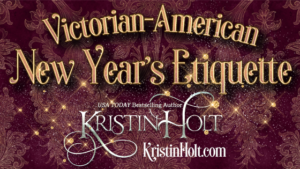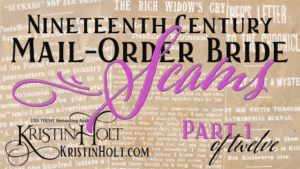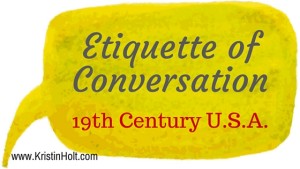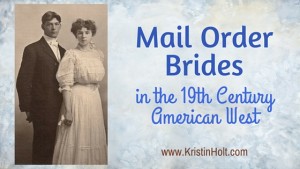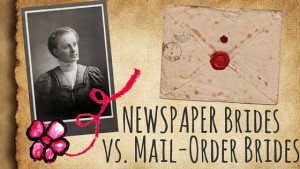America’s Victorian Era Love Letters
America’s Victorian-Era Love Letters
Fans of Mail Order Bride (MOB) historical romances know that many marriages of convenience included letters. Consequently, a couple separated by miles becomes acquainted. America’s Victorian-Era Love Letters.

Etiquette governed acceptable use of love letters and correspondence.
.
![]()
.
TOP TEN THINGS YOU (PROBABLY) DON’T KNOW ABOUT AMERICA’S VICTORIAN-ERA LOVE LETTERS:
.
1. Love letters between courting couples were not limited to those separated by distance. Hence couples in the Victorian Era United States often sent love letters to one another, even while residing nearby. Therefore letters proved an important part of courtship. Precious letters provided a venue for tender words too difficult to speak. Thus destined to be cherished (hopefully) for a lifetime, courting couples saved every letter. America’s Victorian-Era Love Letters
.
2. Correspondents paid close attention to spelling, grammar, sentence structure, penmanship, and turn of phrase. Above all, parents (and specialists of social etiquette) cautioned restraint in young ladies in writing letters to suitors. Indeed, feelings change with time. What if her affection is not returned? Plus, no lady would wish to expose herself to ridicule by a careless man.
.

“Old Love Letters”, from The Yellowstone Journal of Miles City, Montana on February 4, 1887.
.
Translation of the article, above:
Old Love Letters.
.
Old love letters are much like cold soup.
.
A love letter that telegraphs a delightful tingle to the tip ends of the fingers and toes, makes the heart thump fast and even warms up the stomach when first written, if read after the flame which inspired it has died, possesses all the flatness, staleness and nauseating quality that are in a porky lean broth that has laid in the refrigerator since yesterday.
.
Soup has this advantage–it can be warmed over, while love letters cannot.
.
~ Lewiston (Me.) Journal, syndicated to The Yellowstone Journal of Miles City, Montana on February 4, 1887.
.
3. If the courting couple ended their romance, both parties returned all love letters and other mementos of affection. To retain love letters after the demise of a relationship was deemed poor conduct and tarnished reputations.
.
4. In most cases, correspondence was appropriately conducted only with the approval of the young lady’s parents and the young man’s parents.
.
5. Even though her parents have given approval for a correspondence, a young lady must never make light of sentiments expressed by a beau in a letter or in person.
.
A quip, illustrating 19th century humor, referencing the deplorable manners displayed when making light of a man’s affections. From Alabama Beacon of Greensboro, Alabama on March 4, 1890. Syndicated from Merchant Traveler.
.
6. In the same vein, no gentleman (emphasis on gentleman), likewise, would think of boasting of love conquests among his peers. To disclose private details of correspondence to his chums proved a man unworthy and rude. Etiquette insisted that lovers hold the contents of love letters in confidence.
.
7. Gentlemen could not invite themselves to call on a woman of his acquaintance. Likewise, he could not approach an unknown woman he glimpsed on the street. He could, however, write to a young lady to whom he’d not yet received a proper introduction. Etiquette allowed him to request, by letter, permission to call on her. First, he must discover her name and address. Second, such letters disclosed the circumstances and location where he’d glimpsed her. Additionally, why he wanted to call on her. Lastly, and perhaps most importantly, who in town offers a character reference. Seems like risky business, contacting a lady unknown to him. Whereas he is anxious to meet, she may well express disinterest in a return note while he hopes she’ll welcome his interest. This allowance was a special caveat to more than one rule.
.
8. What if he glimpsed a lovely young woman on the street, for instance, but could not learn her name or address? A grand first impression might lead him to post a personal advertisement in the papers. Advertisements of this nature appeared frequently in addition to ads in code. Still, unconventional introductions began many beautiful correspondences and courtships. However many young ladies became a laughingstock among young men (note the absence of gentlemen) posting notices for sport.
.
9. Etiquette allowed for either party to terminate a courtship by letter. Such correspondence spoke frankly because good manners demanded the writer express regret and offer an explanation. Above all, the other person would want to know why.
.
10. A nervous gentlemen, by all means, might propose marriage in writing. This choice proved wise as words selected with care speak most clearly. Rewriting on fresh stationery ensured a good impression. Often written proposals requested a return note within the hour. (What if his letter arrived while she attended book club?) So, letters containing a proposal of marriage need not be mailed. A shy beau might hand her his note in person, for instance.
.
![]()
.
This selection was gleaned from reading The Essential handbook of Victorian Etiquette. (1994, Bluewood Books) Adaptation by American Professor Thomas E. Hill between 1878 and 1890 (ISBN: 0912517123).
.
.
Recommendation: Love Letter Collection (A Timeless Romance Anthology Book 6). Contains six sweet novellas (3 historical and 3 contemporary). Each story’s theme ~ love letters.

.
![]()
.
What do you think?
Do you have access to love letters written by parents or grandparents? Do their letters reveal their personalities?
and / or…
Have you read a romance that included love letters? What did you enjoy most?
.
Related Articles

You’ll be surprised! Men didn’t do the asking. They also didn’t show up to come courting without an invitation. Believe it! Ladies did the inviting. After all, he would be a guest in her home, drink her mother’s lemonade, and mother had to be home to chaperone.
.
![]()
.
Updated March 2022
Copyright © 2015 Kristin Holt LC



